Alabaster
One of the classes included in the Volterra-Detroit Study Abroad Program is studying the craft of alabaster. Alabaster is a soft, white, mineral rock used for carvings. Since the Etruscan period, the people of Volterra have mined alabaster from the hillside. The alabaster was prized for its durability, beautiful coloration, and luminous properties when shined into the light. It has been used to craft vases and urns, small decorative objects, as well as larger sculptures. The Etruscans used the material to sculpt their cinerary urns to honor their ancestors and hold their ashes. In recent times, the alabaster craft remains a large part of Volterra’s culture and the ancient Etruscan tools are still used today to craft the beautiful sculptures.
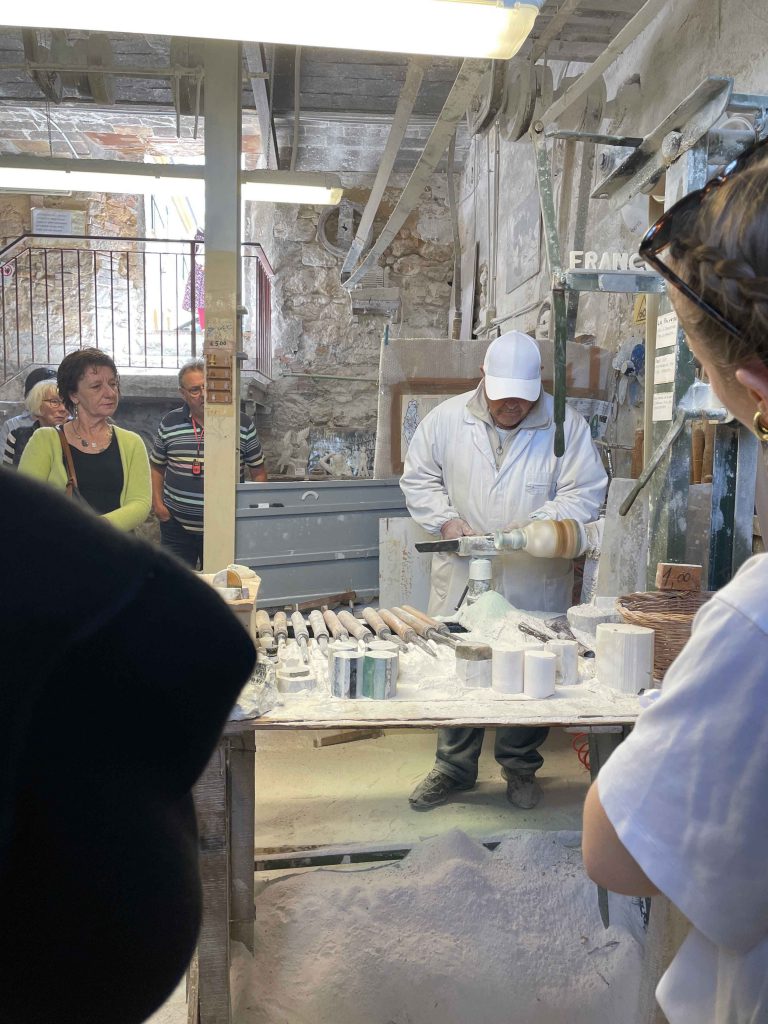
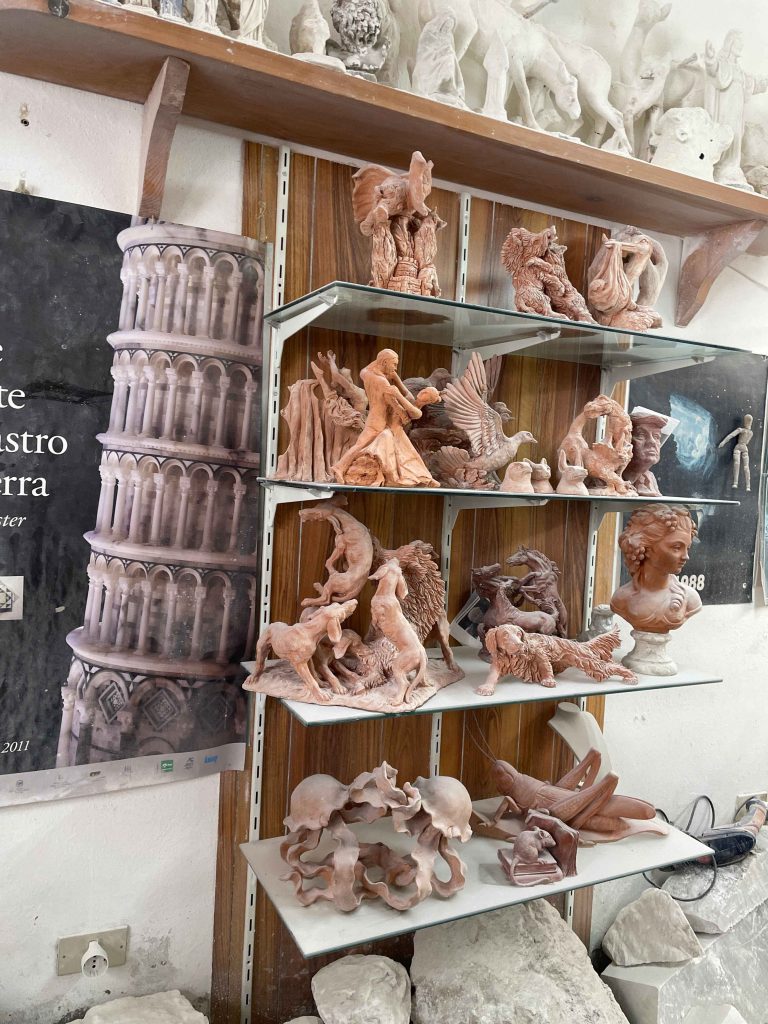
When working with alabaster, it is important to note that the material is particularly hard and can be tedious. It is a slow process that requires precision and dedication. The different areas of expertise in Volterra include ornatisti, specializing in ornamental and decorative objects such as paperweights, dishes, and other small objects; animalisti, crafting elegant horses, birds, and other animals; and scultori focus primarily on human subjects.
The process of sculpting with alabaster begins with choosing a block of alabaster to sculpt. Based on the design of the sculpture, the alabaster is sawed or roughed out with a chisel and mallet to roughly the desired size. For works such as vases, the block is placed on a machine called a lathe and slowly shaped into the decided design. A lathe is a machine tool used to shape wooden or metallic pieces by rotating them through an axis while a motionless cutting device removes unwanted material from the workpiece to form the desired shape. Other tools include mallets, rasps, and chisels, as well as a special tool called a scuffina that was developed specifically for smoothing alabaster.
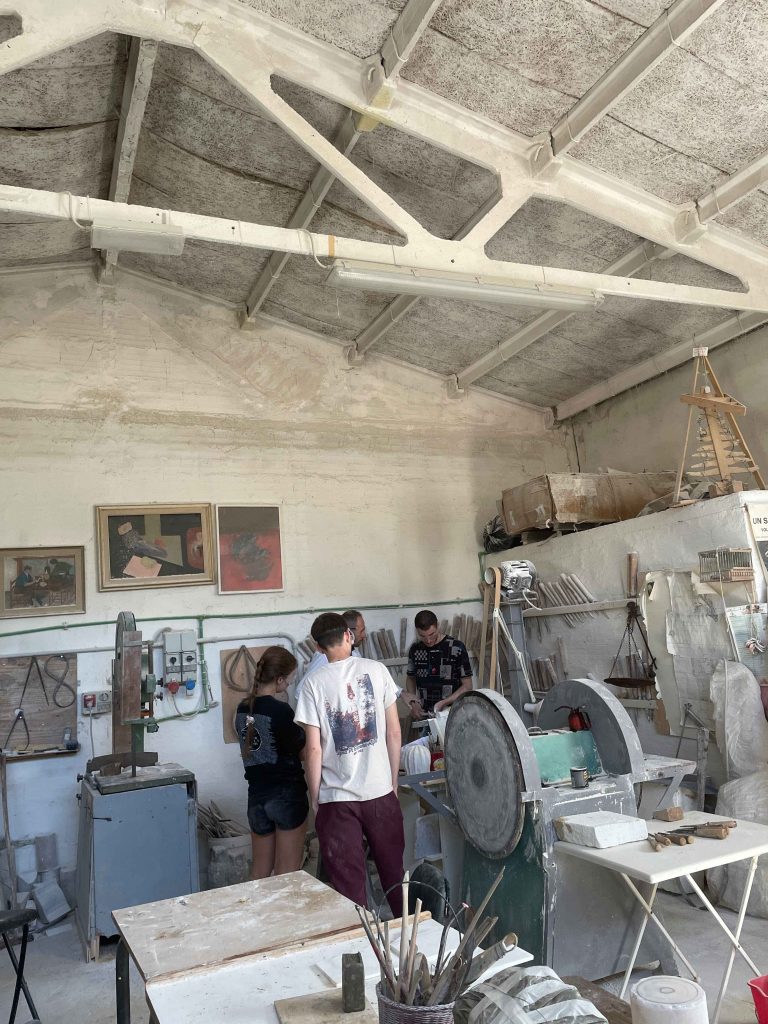
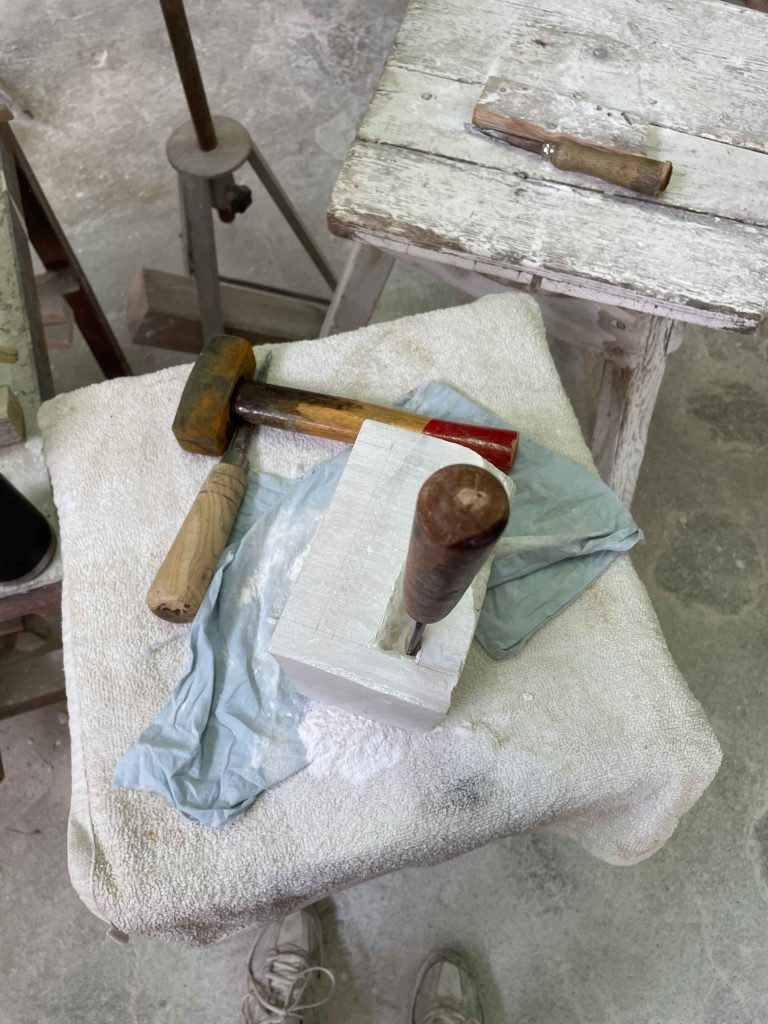
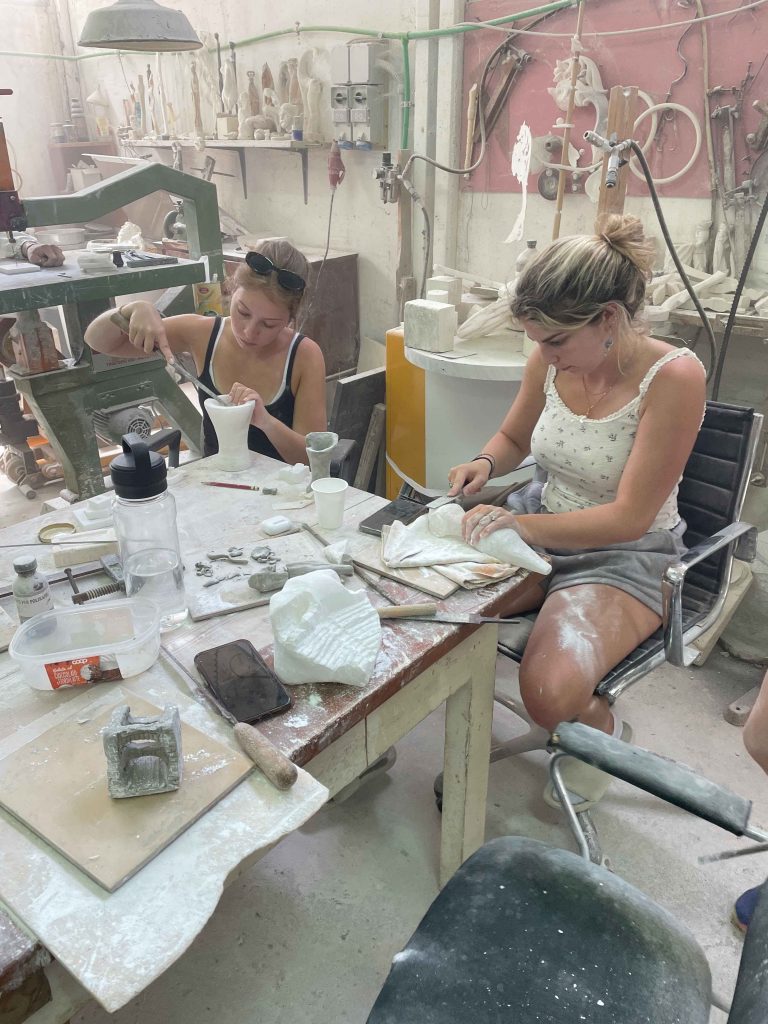
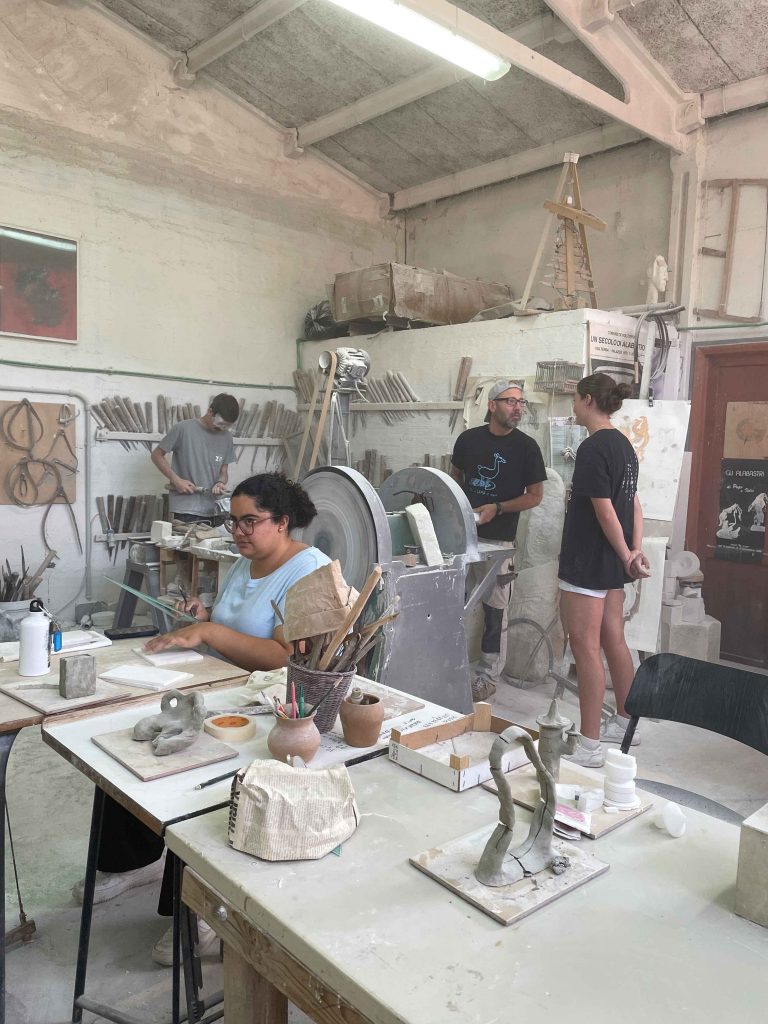
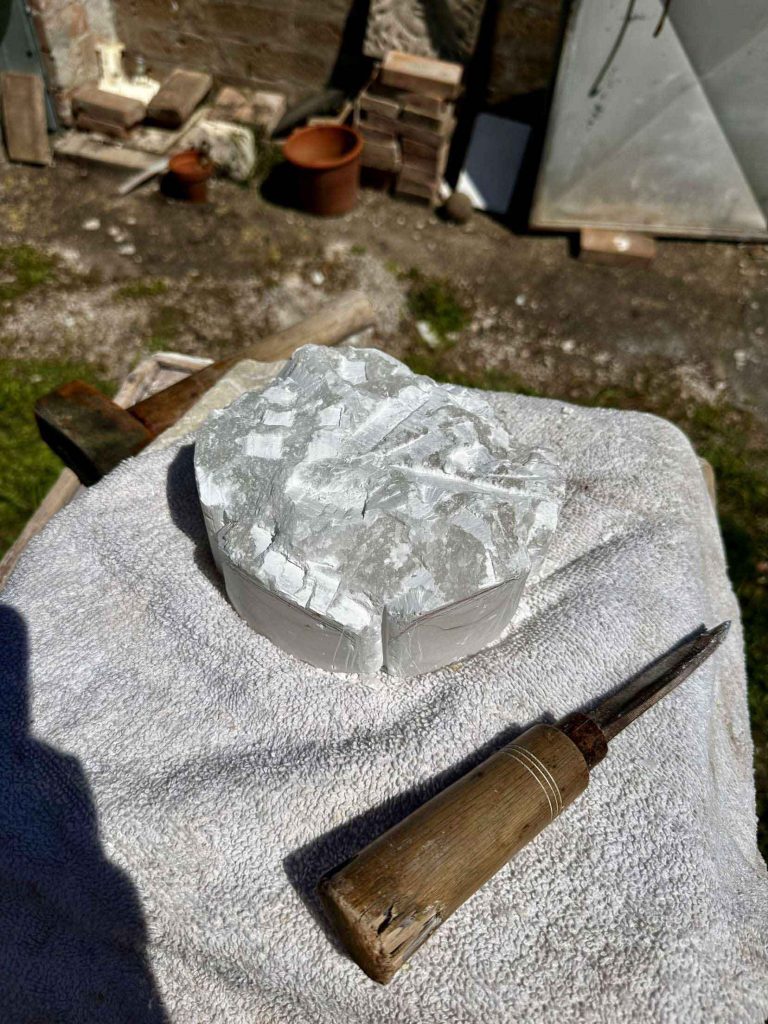
If you ever have the pleasure of visiting this beautiful city in Italy, acquiring a handmade alabaster sculpture is not difficult to achieve. The streets of Volterra glow with beautifully lit alabaster works that fill the shop windows. Many shops filled with alabaster trinkets are available for purchase throughout the city. Some of the more famous designs include wine bottle corks, bracelets, and simple sculptures such as animals or vases.
The students began their alabaster journey by exploring the different alabaster workshops to get a sense of the environment. In Rossi Alabaster Volterra, the students got to see firsthand, the famous craftsmanship of the lathe. As the sculptor worked with the material, it took all but ten minutes to create a beautiful mini vase using this special machine. They also explored some of the shops where the sculptures are sold, their eyes catching on some soon to be made purchases!
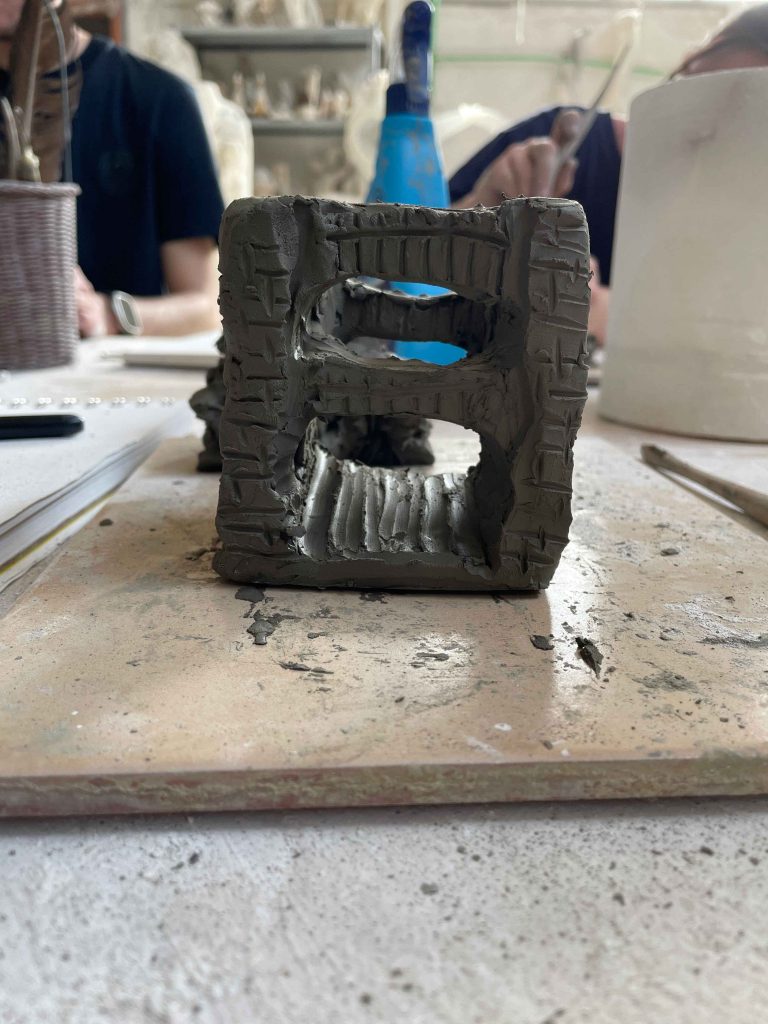
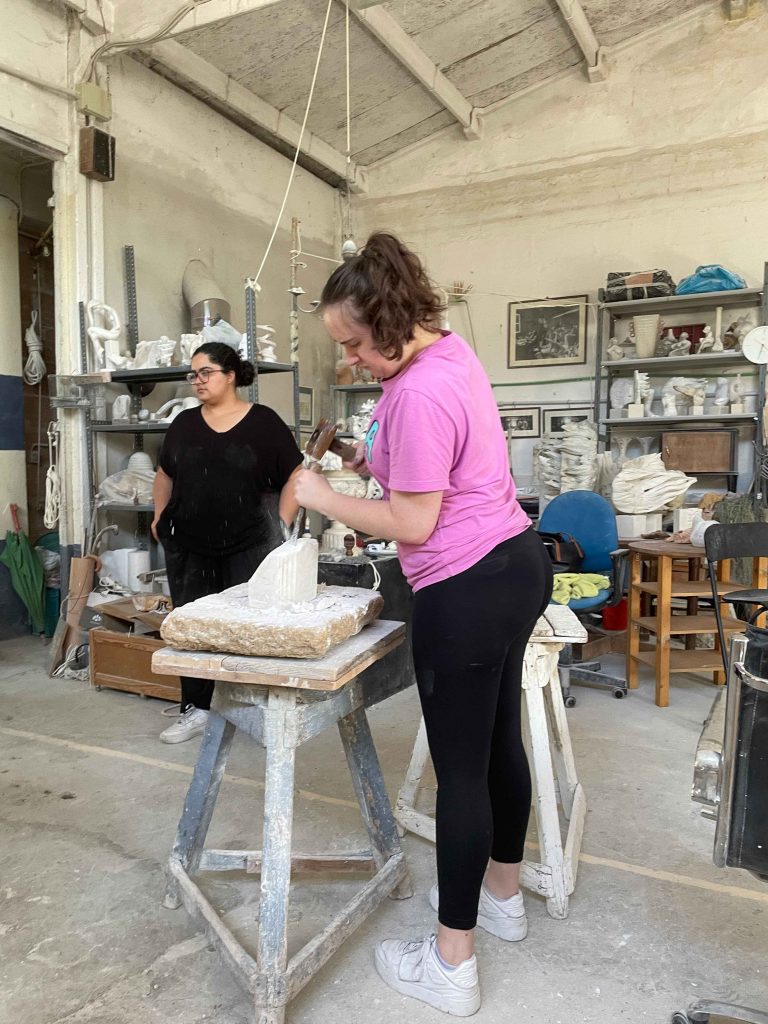
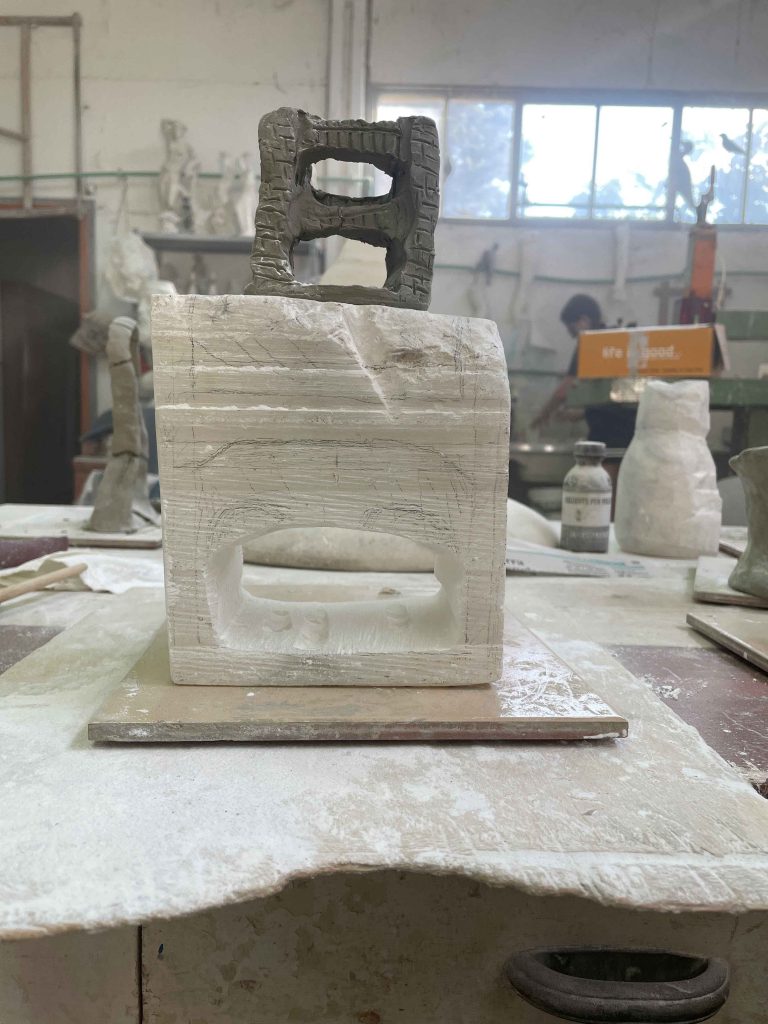
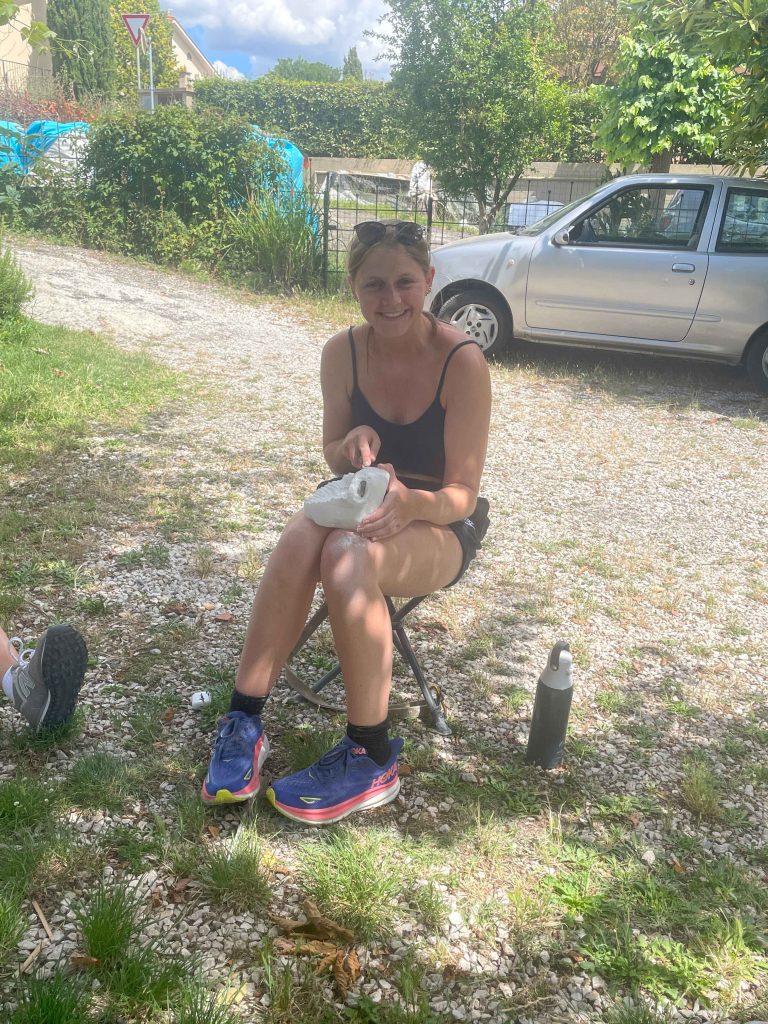
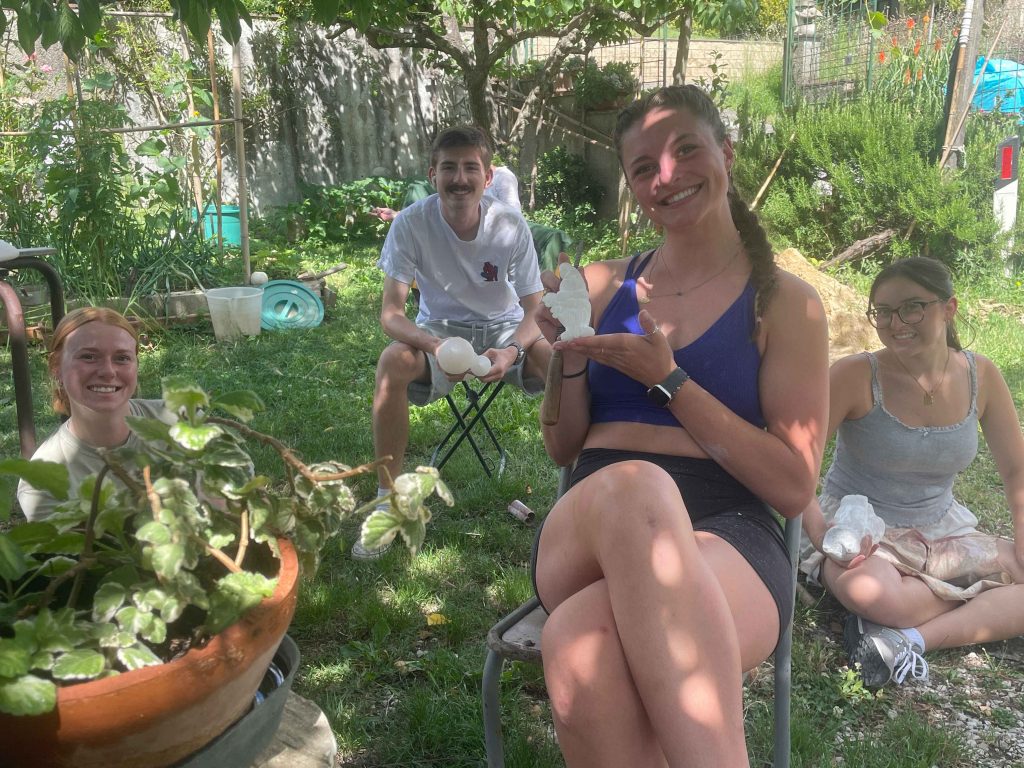
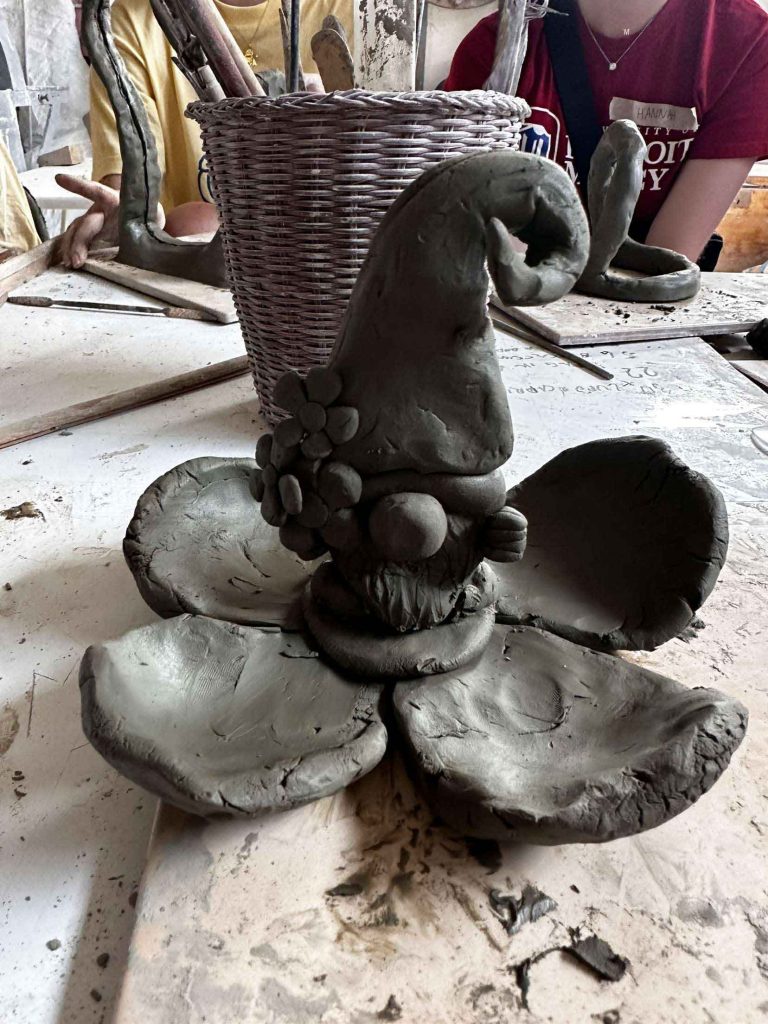
The next step was to begin their own work with alabaster. At the alabaster studio, students will work with Christiano and Yakibo – experienced alabaster craftsmen – to create their own sculptures using the ancient craft. The first step was to mold a clay model of their ideas. Students had many different ideas including abstract shapes, vases, and mementos to their time in Volterra like the Roman Theatre, scenery in Volterra, and a personalized version of the Ombre della Sera. After their clay models were made, students began to choose their block of alabaster that best fit their design. Once they were ready, they began sculpting! Students worked with the different tools in the alabaster arsenal; chisels, mallets, and rasps to create their masterpieces. A few students worked on the lathe to shape their designs into reality. Over the last 3 months, the students have worked once a week to make their very own alabaster sculpture.
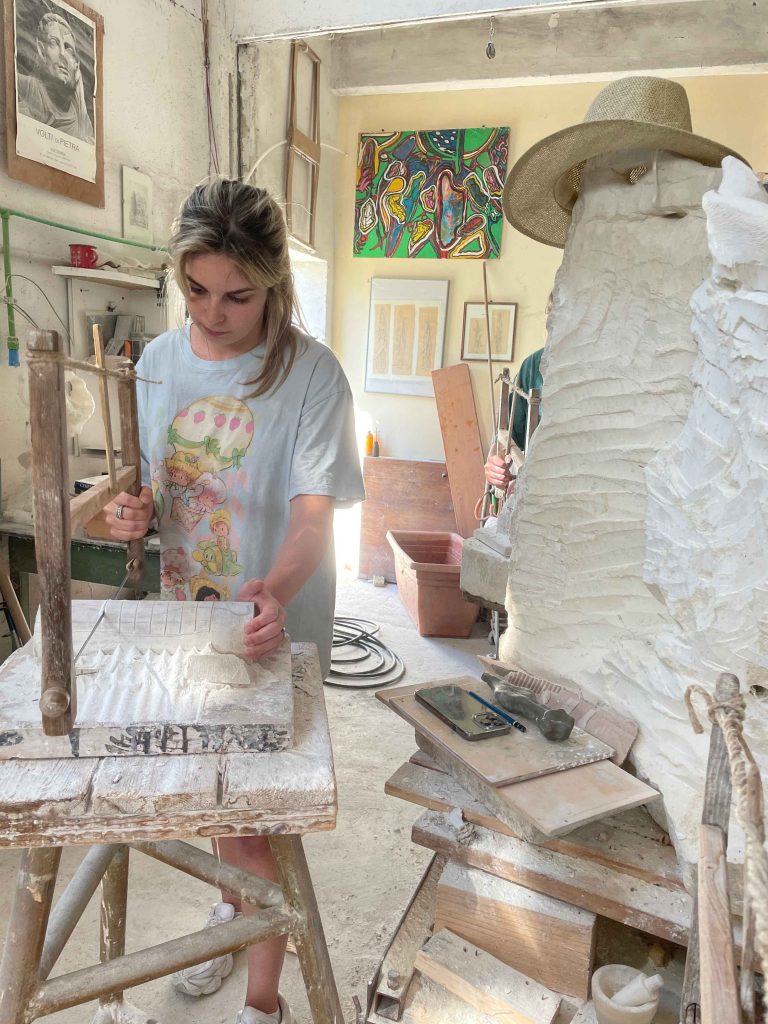
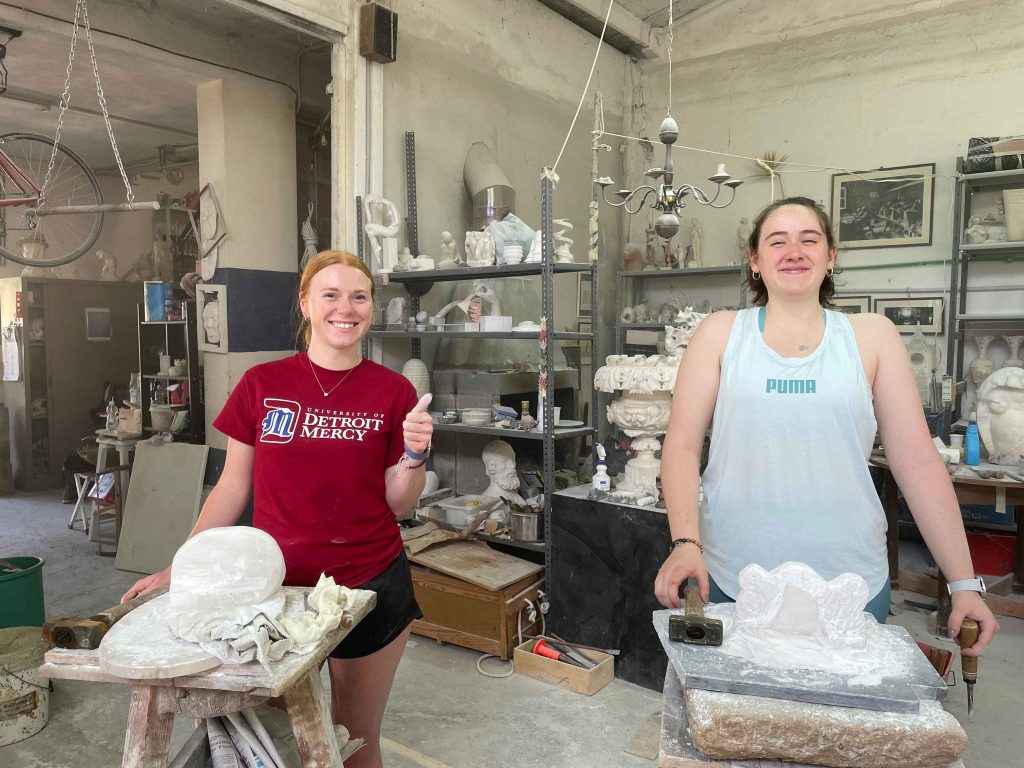
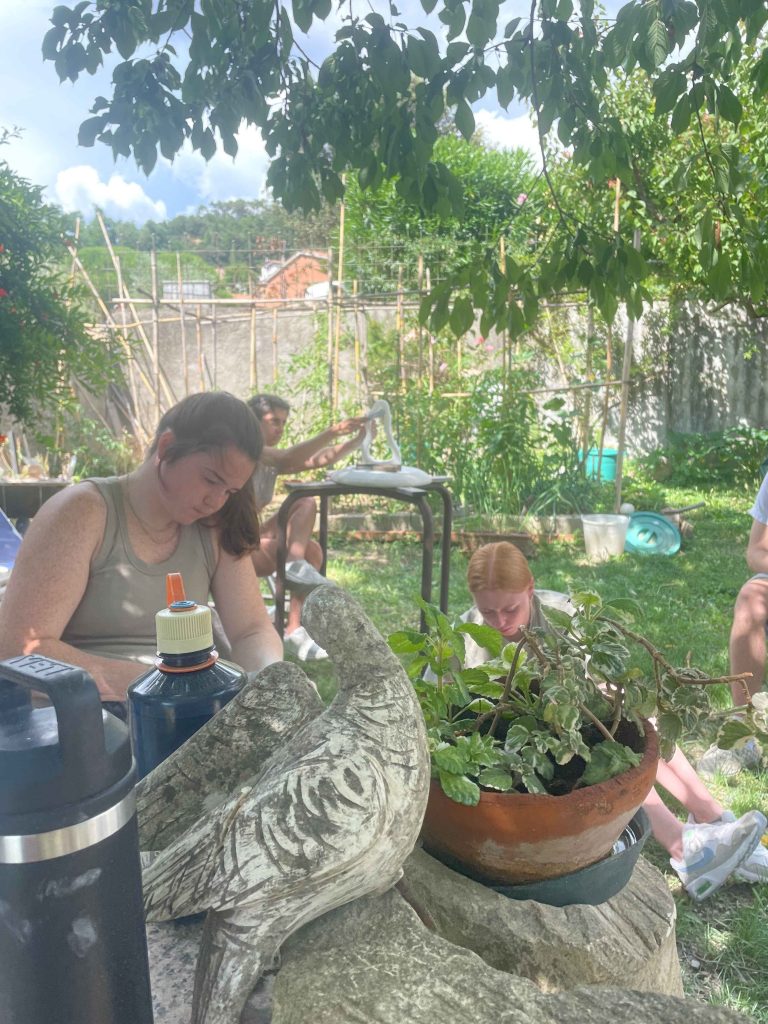
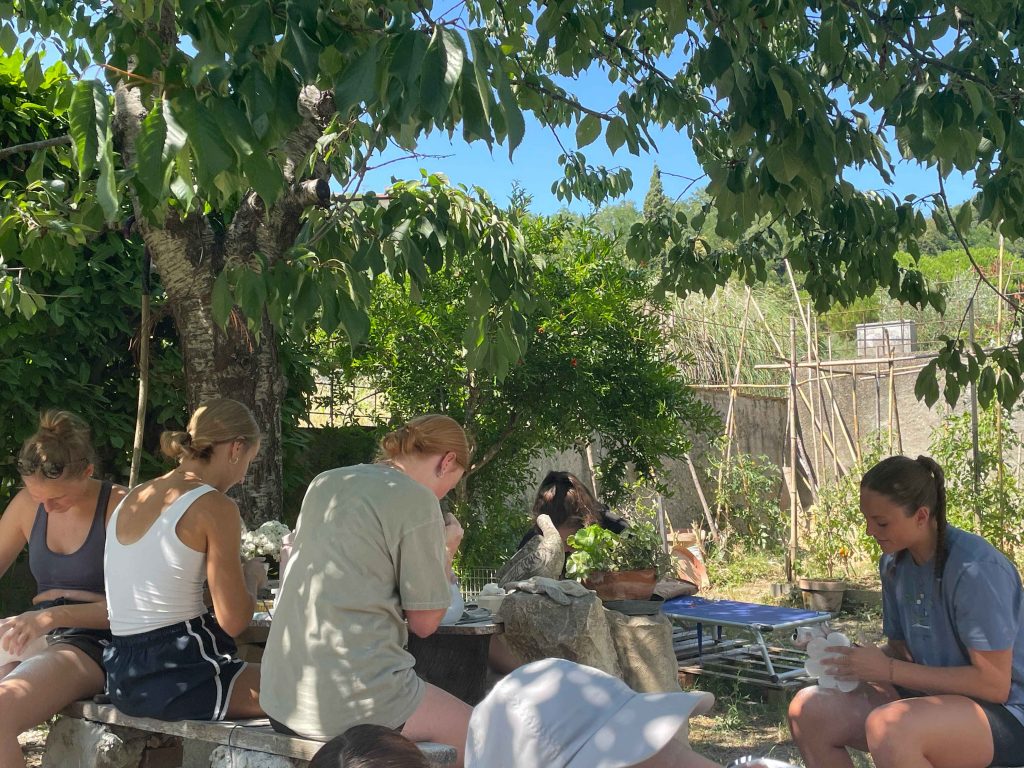
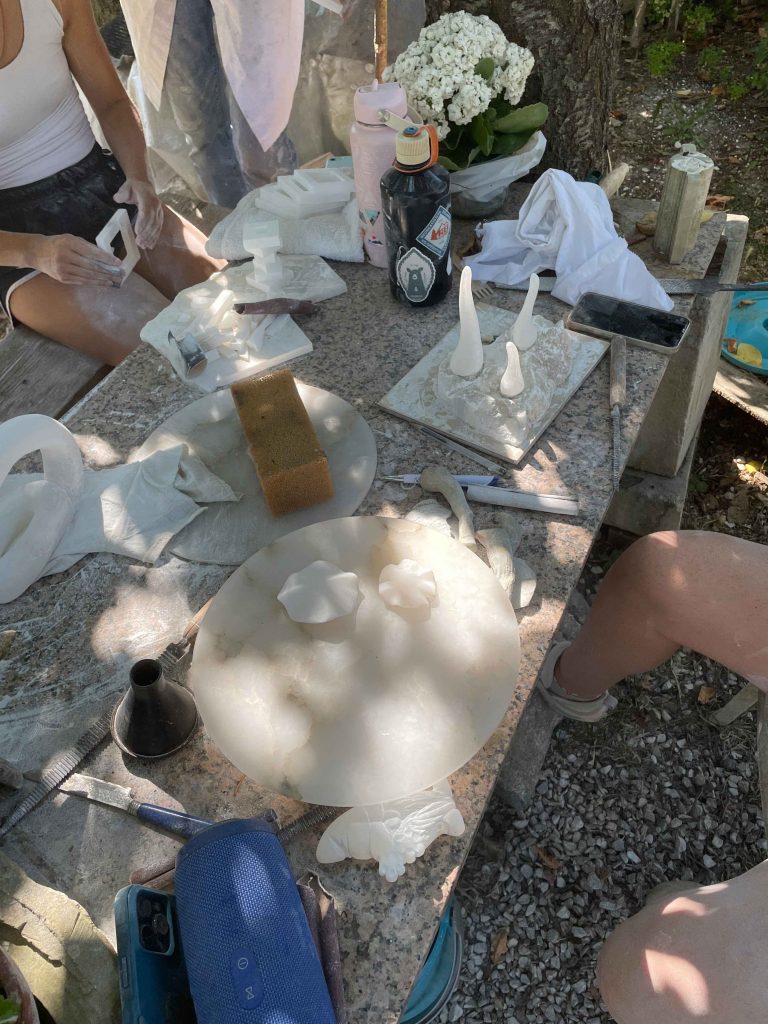
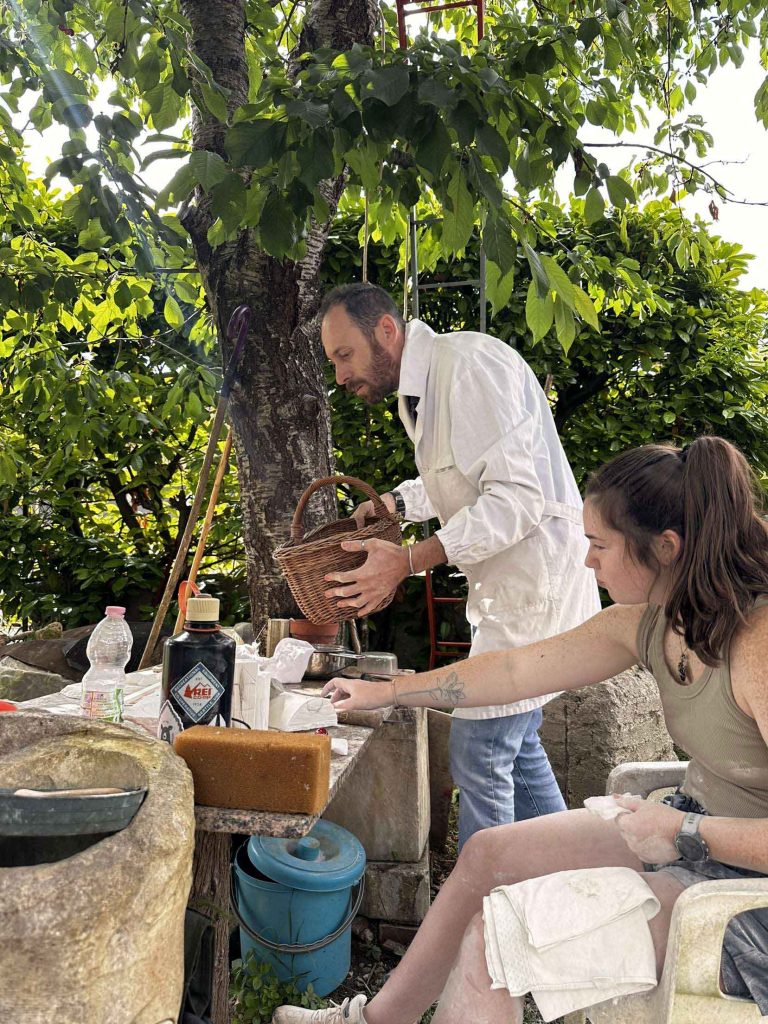
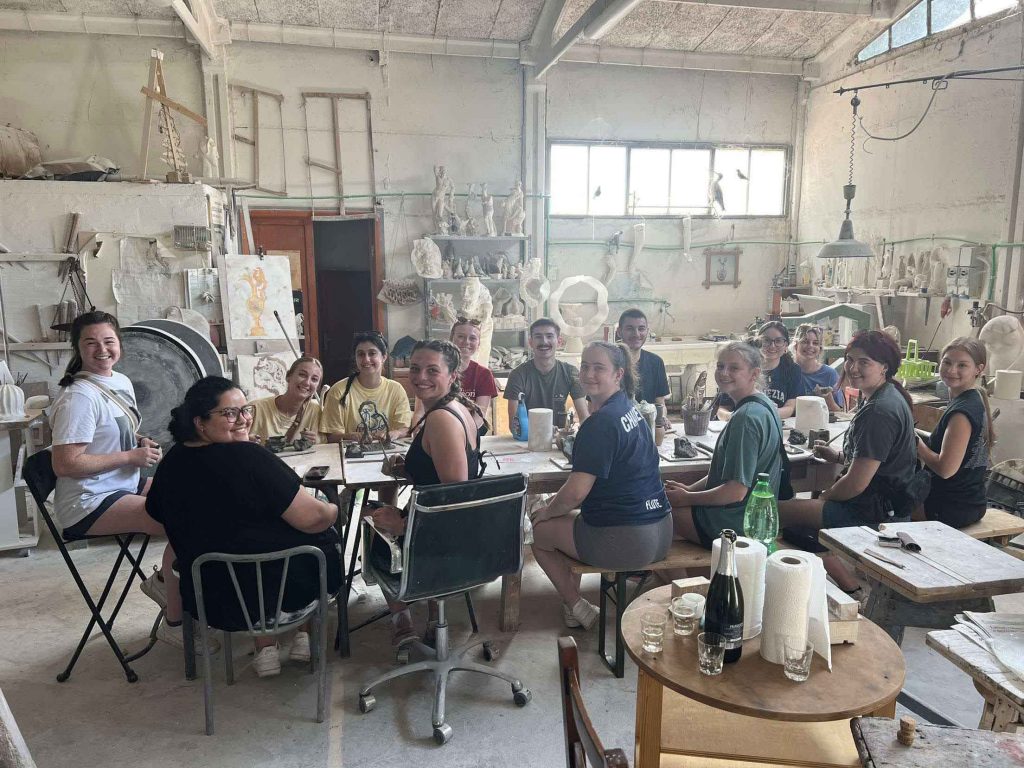
The process to create alabaster sculptures is not an easy task and the students quickly realized the dedication and focus it takes to make the intricate sculptures they had seen in the city. The continuous hours of chiseling and rasping away the material is no simple task and each student worked very hard to craft their sculptures. Overall, the experience was successful, as every student learned about the alabaster process and had an amazing experience creating their own sculpture!
